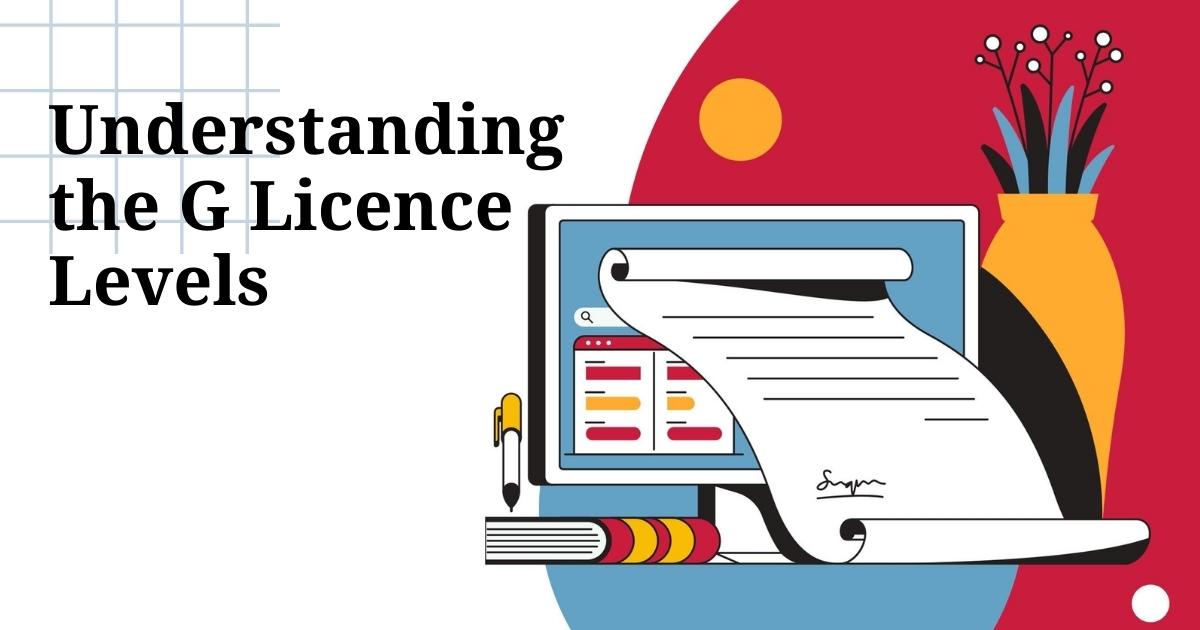Understanding the G Licence Levels
By Humaiz on Oct 17, 2023
There are three levels to Ontario’s graduated licensing system. Each level has a specific restriction, which helps the new drivers to become more safe and responsible. Every level has a challenging test. Understanding and passing each level prevents drivers from accidents and breaking traffic laws.
The three most important levels to Ontario’s graduated licensing system are G1, G2 and Full Class G. Candidates who have achieved the Full Class G Licence have more freedom on the road and fewer restrictions than the G1 and G2 Licence. Keep in mind that if a candidate does not get Full Class G within 5 years, then he has to start this whole process again. Those individuals who didn’t renew their licence before it expired, also have to start it again.
The G1 Licence
Candidates who have passed the eye test and G1 theoretical test receive a G1 licence. You can use different resources to prepare for the G1 computer-based test. Taking the Ontario practice test can also enhance your preparation.
This licence is also known as a driving permit. Individuals who are 16 are also eligible to apply.
There are certain restrictions that a new driver has to adhere to with a G1 Licence. Failing to follow such requirements can lead to suspension of your Licence.
- You should always be accompanied by the passenger who has 4 years of driving experience and holds a full class G licence. If your driving supervisor is under 21, he shouldn't consume alcohol before driving. If he is 21+, then he can retain a blood alcohol level of under .05%.
- The alcohol level in your blood whenever you drive should be 0%.
- Everyone in your vehicle should wear a seat belt.
- You are not permitted to drive between midnight and 5 a.m.
- Drivers with G1 Licence are prohibited to drive on 400-series highways or expressways.
- You can only drive G class vehicles – cars, vans, and small trucks.
G2 Licence or Exit G1 Test
G2 Licence is also called Exit G1 Test. It is the practical test that you have to take after 8 months or 12 months of obtaining a G1 License.
8 months with driver's training
If you have taken driving classes from an MTO approved driving school, you are eligible to apply for G2 after 8 months.
12 months without driver's training
If you haven’t taken any approved driving course, then you are eligible to apply for Exit G1 Licence after 12 months.
Individuals with a G2 Licence experience fewer restrictions
- You can drive unaccompanied.
- You must have zero blood alcohol.
- Every passenger in a car should wear a seatbelt
- If your age is above 21 or if you are accompanied by a fully licensed driver with 4 years of experience and a Full Class Licence, then you can drive on 400-series highways or expressways and also drive at any time.
- If you are 19 and unaccompanied then you face certain restrictions. For the first 6 months, you can only carry one passenger who is also 19 or less in age. In the next 6 months, you can carry up to 3 passengers who are also 19 or less in age. Keep in mind that the restriction of age doesn’t apply if your car passengers are your immediate family members.
- After 12 months of having a G2 Licence, you can apply for a Full Class G Licence.
The Full G Licence
Once you have passed the second and the most challenging road test, you are eligible to get a Full Class G Licence. During the test, a driver examiner at a DriveTest Centre will assess more advanced driving skills. This licence is also called restriction-free G licence. The entire process takes an average of two years. The insurance quotes are also lower for the people who own this Licence.
There is no restriction for a Full G Class Licence. Keep in mind that drivers who are 21 are not supposed to consume alcohol before driving. Moreover, if any of your licence is expired, you need to start the whole process again, starting from taking the G1 Licence test.


